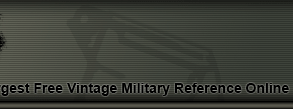GERMAN EDGE WEAPONS HILT MARKINGS
German manufacturers and organizations stamped codes in the
hilt
as a means to indicate several things. In some
cases it would denote the district where the item was issued. In other cases it would be the
unit to which the soldier belonged, etc.
This website provides a list of some of the hilt markings applied to daggers and swords during
WWII. Keep in mind thath the lists are not complete. There may be more markings available
that are not covered here.
This information is made available free of charge to the visitor/enthusiast courtesy of
MilitaryItems.com,
a company dedicated to the preservation of military history and to providing quality military
antiques and collectibles to museums, institutions and the general public.
| ORGANIZATION |
DESCRIPTION |
| NSKK |
The N.S.K.K. or Nationalsozialistische Kraftfahrkorps was a German organization established as a separate formation of the SA in about 1929. It was the Motor Transportation Formation of the N.S.D.A.P. and grew from the various SA transportation battalions of the 1920's.
|
| SA |
The SA was the oldest paramilitary formation of the NSDAP and made its first appearance in November 1921 at a rally in the Munich Hofbrauhaus. The SA was composed mainly from members of the various Freikorps formations. Herman Goring was the founder of the SA. His vision was to create a military unit for the NSDAP.
|
| Hitler Youth |
The Hither Youth originated in concept in the early 1920's when Baldur Von Schirach, later the Reichs leader of the HJ, formed the Ruhr-Hitler-Jugend.
After 1934 the Hitler Youth became a national youth formation absorbing all other German youth groups; Scharnhorst Youth, The Pathfinders, etc. In 1938 Hitler made it mandatory that all German youth between the ages of 10 and 18 become members of the Hitler Youth.
|
This service is provided free of charge to the visitor/enthusiast courtesy of
MilitaryItems.com,
a company dedicated to the preservation of military history and to providing quality military
antiques and collectibles to museums, institutions and the general public.
|





